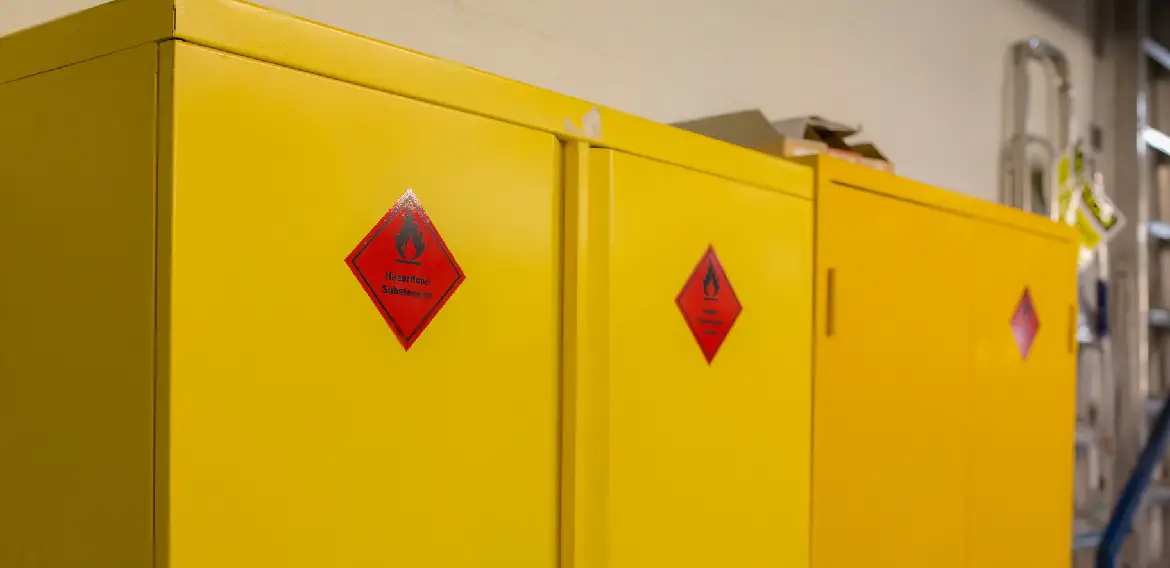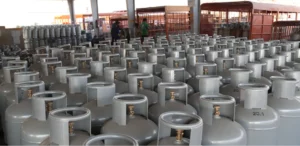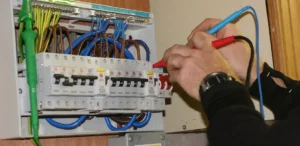Introduction
In the previous post, we discussed WorkSafe New Zealand press release about AS 1940 cabinets covering the compliance standards, inspection requirements and enforcement actions for business in New Zealand. There are many types of dangerous goods storage cabinets and today’s post covers AS 3780 type cabinets, which are suitable for storing and handling corrosive substance. The AS/NZS 1940-2017 standard is particularly relevant as it provides guidelines for the safe storage of flammable and combustible liquids, which often overlap with corrosive substances in terms of storage requirements.
By carefully choosing a suitable storage cabinet for hazardous substances, an organization can mitigate the risks to ensure the safe containment and management of hazardous materials while meeting compliance obligations.
What are AS 3780 Cabinets?
These specialised storage units are designed and maintained in accordance with the Australian Standard AS 3780:2023 – The storage and handling of corrosive substances. The primary purpose of storage cabinets for corrosive substances is to ensure the safe containment and management of hazardous materials to minimize the risk of chemical spills, leaks, and potential reactions that can occur when corrosive substances are improperly stored.
Considerations
There are 8 main headings listed in AS 3780:2023 depending on purpose. Important ones are:
- Environment – indoor or outdoor then by location, separation and segregation requirements respectively.
- Design, materials, storage capacity and the limits allowed – section 5 for indoors, section 6 for outdoors containment.
- Designs should include moisture and corrosion mitigation
- Emergency management – lighting, ventilation, first aid and first leaks/spillage containment (section 8, 9 and 10).
Additional Points
- Signage and clear labeling are important to inform the users of the specific types of storage cabinets. Eg. Class 8 Corrosive Substances Diamond
- AS 3780 cabinets should be separated from other dangerous goods classes. Eg. cabinet locations have a recommended distance of at least 3m as a minimum (AS/NZS 3833:2007)
- Emergency Equipment: Safety showers, eyewash stations, and hand-washing facilities must be provided within 10 meters but no closer than 3 meters from the cabinet.
Rifft Safety offers 2 types of indoor corrosive storage cabinets starting from 30L to 250L. Product specification: Stainless steel with acid resistant powder coating or PVC material.
Examples of AS 3780 Applications
- Laboratory setting in education organization or industrial labs.
- Industrial manufacturing requiring large vats/tanks of acid.
- Wastewater treatment plant requiring chemicals to treat effluents.
Maintenance and Inspection
Regular maintenance and inspection of AS 3780 cabinets are essential to:
- Check for signs of corrosion or degradation, especially on metal components.
- Ensure doors are self-closing and latches are functioning properly.
- Verify the integrity of the sump to ensure it remains liquid-tight.
- Inspect ventilation systems, if present, to ensure proper function.
In conclusion, it is important to assess what type of items are being store to ensure the type storage containers is suitable and fit for purpose. By undertaking the appropriate considerations, one can conserve time and financial resources while ensuring compliance and workplace safety are met, thereby fostering employees and customers confidence into the business.
As always, if you are new here, hello and welcome. Feel free to email us at hello@rifft.co.nz or connect and send us a message on LinkedIn if you’d like something specific to be covered.


